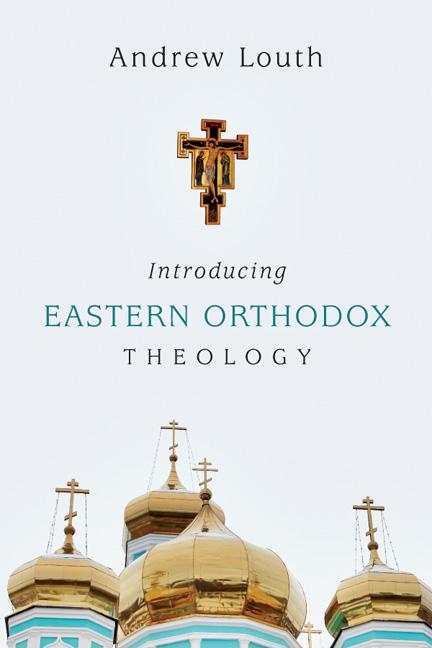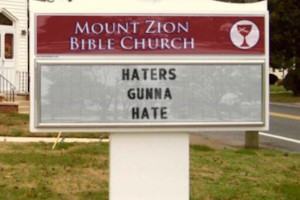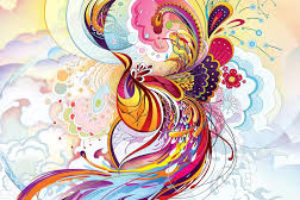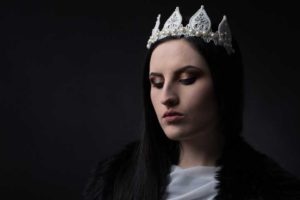For many years, the go-to book for a first taste of the rich history, liturgy and tradition of Orthodoxy has been Timothy Ware’s The Orthodox Church. For those ready for a new way to wade deeper into what Orthodox Christians believe, Introducing Eastern Orthodox Theology is a very helpful next step that it is perfectly pitched for intellectual Evangelicals who are IVP Academic’s core readers. It would be an accessible and useful addition to the library of both academics and average motivated readers.
In a way that builds bridges between Eastern and Western Christianity, Fr. Louth breaks down the stereotype of Eastern Orthodoxy as a remote and exotic tradition, and instead stresses that Orthodoxy’s “distinctiveness is to be found in the way the traditional faith of Christians is upheld among the Orthodox…as expressed, and tested, in prayer and worship” (p. xix). Orthodoxy is a way of life. Theological dogma is important, but it can be most fully learned through experience within a worshipping Orthodox community.
Some reviewers have kept this at arms’ length by calling his take “personal” but this is far from a book of “what Orthodoxy means to me.” It is instead a call for readers to take this theology personally, to see it as a living thing and perhaps, best of all, to pair their reading with a visit to an Orthodox Divine Liturgy. In this, Louth is not an apologist; he is standing solidly on Orthodox tradition, which has never, as in Post-Enlightenment Western Europe, accepted “pastoral” and “academic” theology as separate spheres. The Orthodox see theology existing in, through, and for the Church.
Fr. Louth lays out his chapters by topic, making it easy for his readers to find answers to specific questions they may have. After establishing his lived-faith approach, he covers doctrines relating to the Trinity, Creation, Christ and Sin. These first few chapters offer many points of connection for Christians of other traditions. In discussing the Fall, for instance, he emphasizes the importance of the overall story. It is not simply a small arc of Fall and Redemption, but a larger arc of God’s intention for growth from creation to deification – to grow in love and likeness of Him. The Fall interrupted this process. By telling the story this way, it makes it easy for readers to see the reasoning for the Orthodox understanding of deification. Fr. Louth emphasizes that death (not sin) is seen as the most important result of the Fall and thus makes clear distinctions between the Western/Augustinian concept of original sin and the multiple ways Orthodox have understood sin and repentance.
The chapters which are likely to be of greatest interest to Evangelical readers are the later ones which deal with more distinctively Orthodox topics: what it means to be human, sacraments, icons and liturgy. In developing what it means to be “made in God’s image” Fr. Louth enlarges upon the more Greek idea of being made “according to the image of God,” that is, Christ, who is the perfect image of God. Here again deification takes center stage. It is essential, Fr. Louth writes, “because recovering the fullness of the image will involve real changes in ourselves, changes that mean that the image of God in which we are created becomes more and more evident”(p. 95).
Sacraments, icons and liturgy are often the first questions raised by those who first encounter Orthodoxy, but by placing their discussion later in the book, Fr. Louth shows a wish for them to be understood within the context of broader Orthodox theology. They are not just the “exotic” flairs, which can intrigue but are also most often discounted as ethnic practices. No; Fr. Louth makes clear that these are completely at home within the theological ground he has just covered. Because of God’s love for creation, matter is good and can be used in the sacraments, most commonly called the Mysteries by Orthodox. The Mysteries draw us into the Church – the people alongside whom we are being saved or deified.
Fr. Louth is accessible to readers from other Christian traditions but in true Orthodox fashion supports his thoughts with Scripture, Liturgy and the Church Fathers, almost in equal measure. Overall, this is a very useful book for those wanting to know more about Orthodox theology. It covers a wide range of topics and the only things Fr. Louth could have spend more time on is the role of gender within the section on being human and perhaps a whole additional chapter on the Virgin Mary. Yet even with these notable exceptions, this is a book I can heartily recommend.
The Bottom Line: Introducing Eastern Orthodox Theology admirably succeeds in everything it sets out to accomplish. Those interested in exploring the Eastern Orthodox tradition will find this an invaluable starting point.
Review by Kathryn Wehr
University of St Andrews





Leave a Reply
Your email is safe with us.